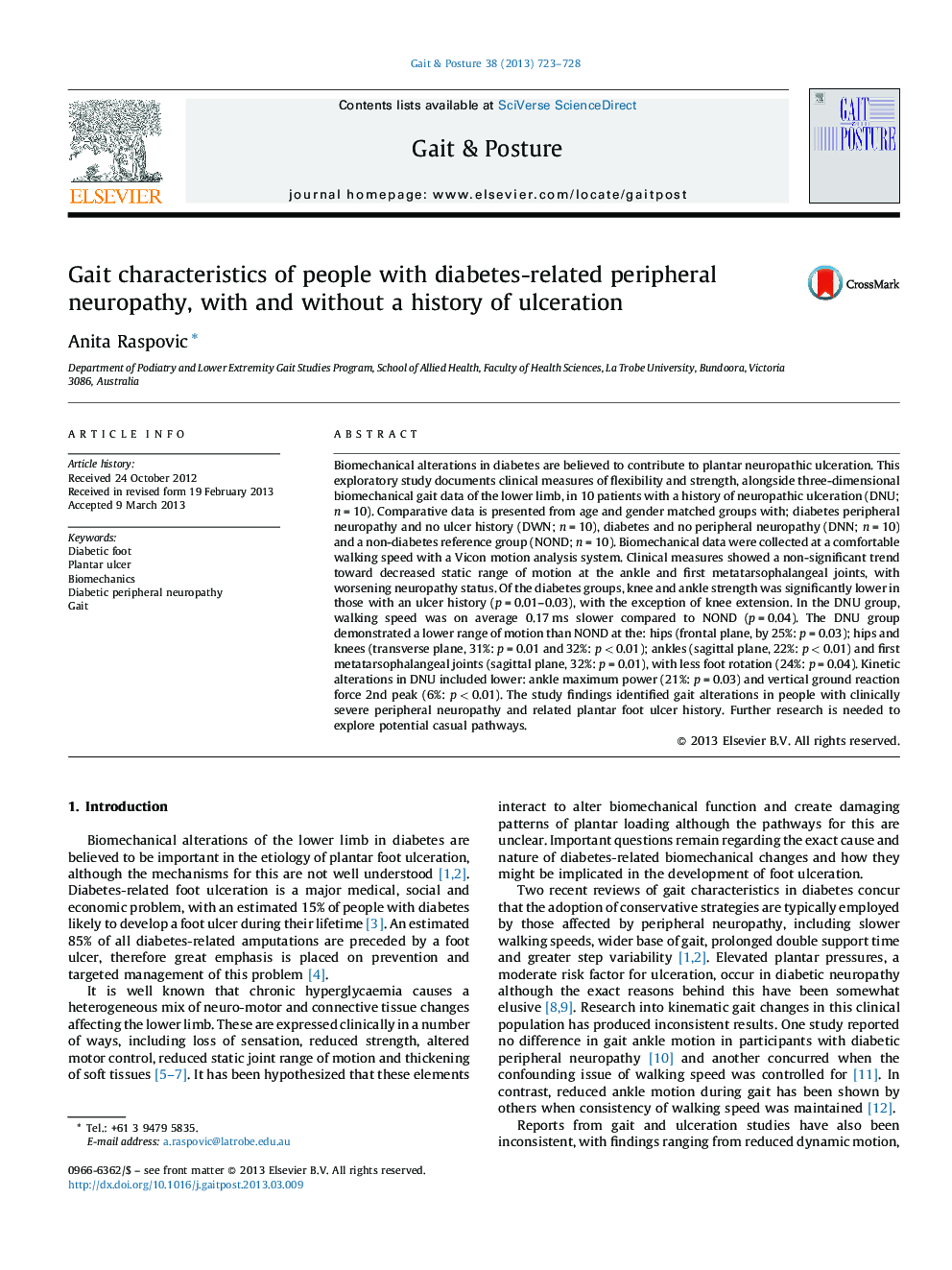| کد مقاله | کد نشریه | سال انتشار | مقاله انگلیسی | نسخه تمام متن |
|---|---|---|---|---|
| 6206732 | 1265652 | 2013 | 6 صفحه PDF | دانلود رایگان |
- Biomechanical alterations are believed important in diabetic foot ulceration.
- Clinical and gait measures were taken in people diabetes-related ulceration.
- Altered ankle function was associated with past neuropathic plantar foot ulceration.
- Risk of biomechanically induced ulceration may be linked with neuropathy severity.
Biomechanical alterations in diabetes are believed to contribute to plantar neuropathic ulceration. This exploratory study documents clinical measures of flexibility and strength, alongside three-dimensional biomechanical gait data of the lower limb, in 10 patients with a history of neuropathic ulceration (DNU; n = 10). Comparative data is presented from age and gender matched groups with; diabetes peripheral neuropathy and no ulcer history (DWN; n = 10), diabetes and no peripheral neuropathy (DNN; n = 10) and a non-diabetes reference group (NOND; n = 10). Biomechanical data were collected at a comfortable walking speed with a Vicon motion analysis system. Clinical measures showed a non-significant trend toward decreased static range of motion at the ankle and first metatarsophalangeal joints, with worsening neuropathy status. Of the diabetes groups, knee and ankle strength was significantly lower in those with an ulcer history (p = 0.01-0.03), with the exception of knee extension. In the DNU group, walking speed was on average 0.17 ms slower compared to NOND (p = 0.04). The DNU group demonstrated a lower range of motion than NOND at the: hips (frontal plane, by 25%: p = 0.03); hips and knees (transverse plane, 31%: p = 0.01 and 32%: p < 0.01); ankles (sagittal plane, 22%: p < 0.01) and first metatarsophalangeal joints (sagittal plane, 32%: p = 0.01), with less foot rotation (24%: p = 0.04). Kinetic alterations in DNU included lower: ankle maximum power (21%: p = 0.03) and vertical ground reaction force 2nd peak (6%: p < 0.01). The study findings identified gait alterations in people with clinically severe peripheral neuropathy and related plantar foot ulcer history. Further research is needed to explore potential casual pathways.
Journal: Gait & Posture - Volume 38, Issue 4, September 2013, Pages 723-728
